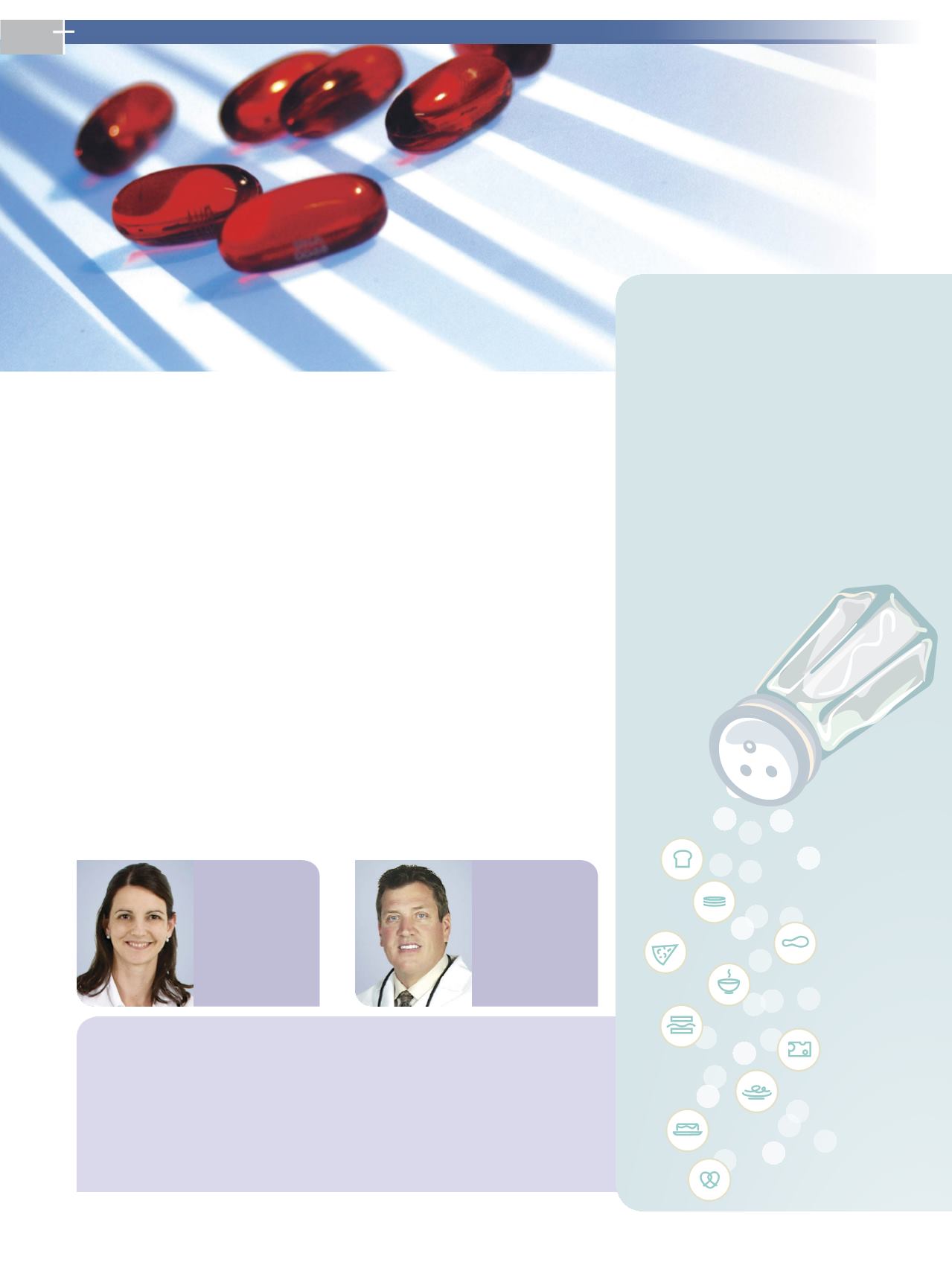
14 FAITH REGIONAL
HEALTH SERVICES
Q
I have high blood pressure
and high cholesterol, but I
feel ne. Do I need to treat
these?
Dr. Hartzell:
This is a statement
I hear frequently in my clinic. The
dif culty with high blood pressure
is that it causes small breaks or tears
in the arteries, which cause harden-
ing or narrowing of the blood ves-
sels. This ultimately leads to a heart
attack or stroke, even if it’s decades
later. Prevention is key. It’s impor-
tant to get your numbers checked
regularly and treat high blood pres-
sure and high cholesterol as soon as
it’s identi ed.
Q
Why is it important to bring
a list of medications with you
to a doctor’s appointment?
Dr. Handke:
As doctors, we often
ask patients to bring a list of their
medications with them or, even
better, to bring their prescription
bottles. Many patients have several
different providers caring for their
health. Even though we commu-
nicate very well with one another,
a patient may have been put on
or taken off a medication that we
don’t know about. It’s easier to take
care of the patients when we know
exactly what medications they are
taking and how they are taking
them. Bringing your medications
with you is a very important part of
your examination.
Ask the experts
Tune in to take charge of your health
Both Maryanne Hartzell, MD, and Lane Handke, MD, address common patient
questions during Faith Regional Physician Services’
Health Beat Minute
, airing
at 8:18 a.m. on 94 Rock and 4:30 p.m. on US92. Tune in Monday through Friday
to hear from other specialists with Faith Regional Physician Services, or go
online to
and click on “Health Beat Minute” under “Education
& Resources” to listen to other topics covered.
1. Bread and rolls
2. Cold cuts/cured meats
3. Pizza
4. Poultry
5. Soups
6. Sandwiches
7. Cheese
8. Pasta dishes
9. Meat dishes
10. Savory snacks
Searching for
sodium: The
top 10 culprits
Eating too many foods high in sodium
can make blood pressure go up, which
significantly increases the risk for heart
disease and stroke. Most of the sodium
in our diets comes from the prepared
foods we buy at the grocery store or at
restaurants—not from our saltshakers.
In fact, more than 40 percent of the so-
dium we eat comes from just
10 food categories. Some
of the chief culprits may
surprise you.
Source: Centers for
Disease Control and
Prevention
Maryanne
Hartzell, MD
Faith Regional
CardioVascular
Institute
For an
appointment, call
402-844-8284
.
Lane Handke, MD
Faith Regional
Physician
Services Pierce
Family Medicine
For an
appointment, call
402-329-4195
.


